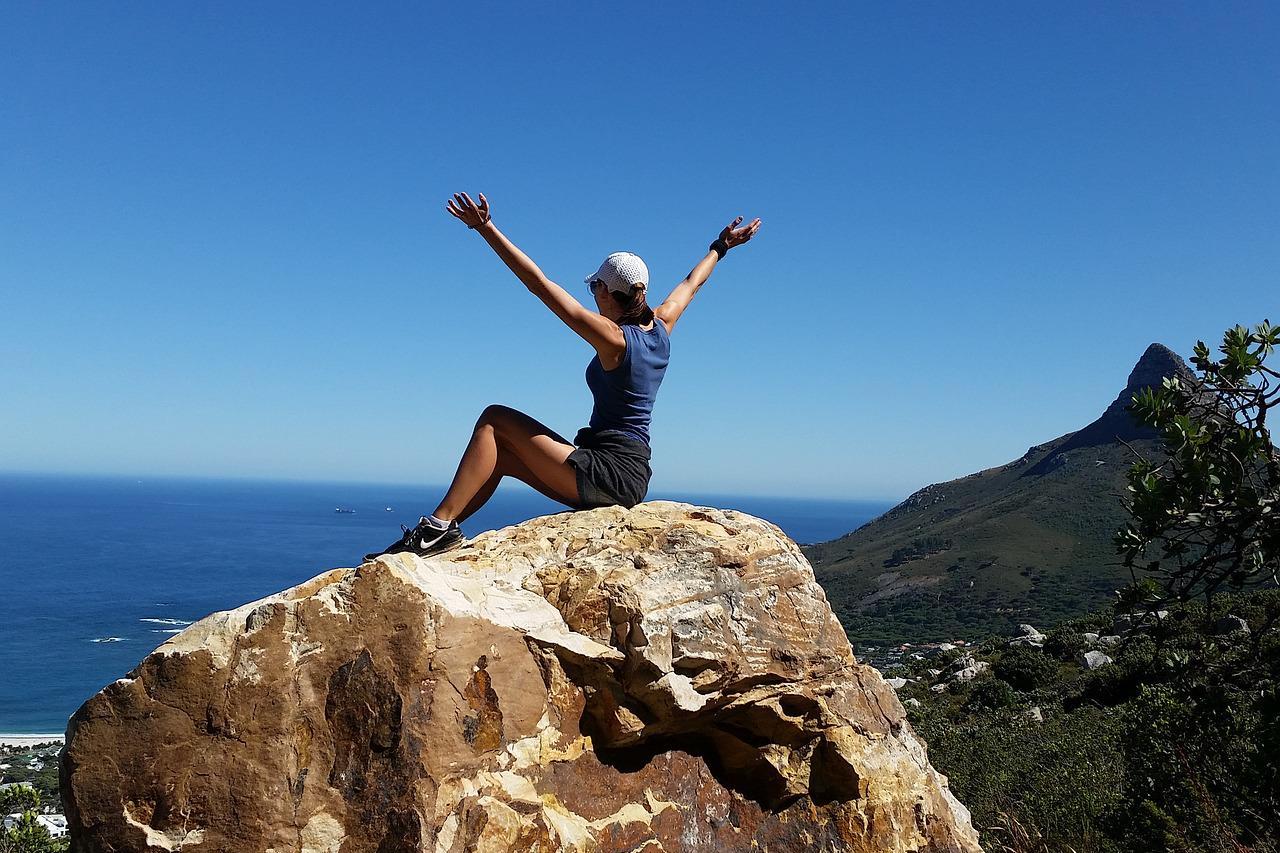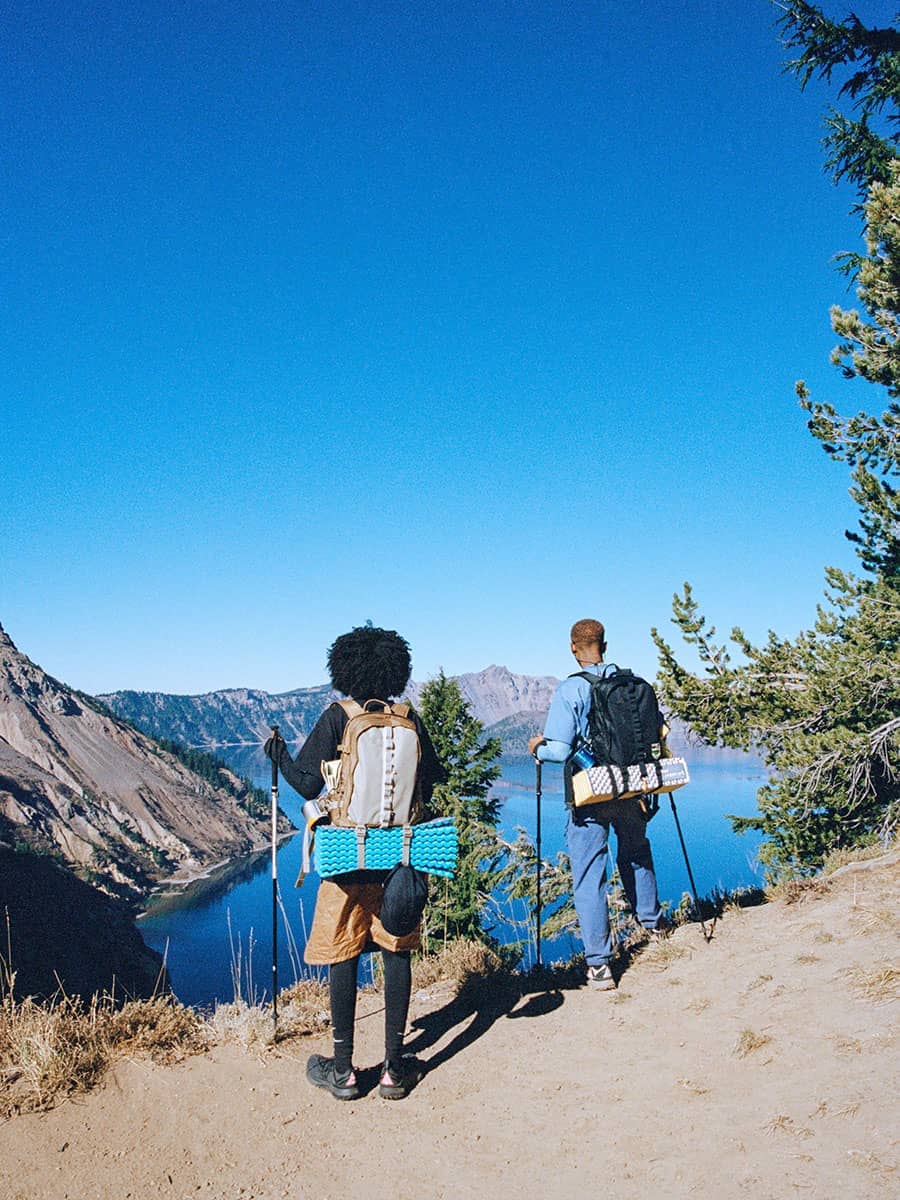Conquer South Africa: Ultimate Packing Guide for Every Adventure

Introduction
South Africa offers an incredible range of adventure activities and natural wonders, making it the ultimate destination for thrill-seekers and nature lovers alike. From breathtaking wildlife encounters to adrenaline-pumping outdoor adventures, there's so much to discover in this beautiful country. If you're looking for an unforgettable experience, South Africa should definitely be at the top of your travel bucket list.
Why South Africa is the ultimate adventure destination
-
Diverse Wildlife: South Africa is home to some of the most iconic and diverse wildlife in the world. You can embark on thrilling game drives and safaris to spot the Big Five (lion, elephant, buffalo, leopard, and rhino) in their natural habitat. The renowned Kruger National Park offers incredible opportunities for wildlife enthusiasts.
-
Stunning Landscapes: From the dramatic coastline of Cape Town to the breathtaking mountains of the Drakensberg, South Africa is a haven for outdoor enthusiasts. You can go hiking, rock climbing, and bungee jumping in stunning natural landscapes that will leave you in awe.
-
Adrenaline-Pumping Activities: If you're an adventure junkie, South Africa has plenty to offer. You can go shark cage diving in Gansbaai, where you can come face to face with these majestic creatures. For a unique experience, try sandboarding in the deserts of the Northern Cape or go skydiving over the beautiful Garden Route.
-
Cultural Experiences: South Africa is a melting pot of cultures, and you can immerse yourself in the vibrant local communities. Visit the bustling markets of Johannesburg, explore the colourful Bo-Kaap neighbourhood in Cape Town, or learn about the rich history of the Zulu people in KwaZulu-Natal.
Importance of proper packing for a South Africa trip
-
Climate Considerations: South Africa has a varied climate, with different regions experiencing different weather patterns. It's essential to pack for the specific season and location you plan to visit. Pack lightweight clothing for the summer months, but also bring warmer layers for cooler evenings.
-
Safari Essentials: If you're planning to go on a wildlife safari, make sure to pack comfortable and neutral-coloured clothing. Don't forget sunscreen, insect repellent, and a good pair of binoculars to enhance your wildlife-viewing experience.
-
Travel Documentation: Make sure to bring your passport, visa, and any necessary documents for your trip. It's also a good idea to carry both digital and physical copies of your travel documents, as well as emergency contact numbers and travel insurance details.
-
Safety Precautions: South Africa, like any other destination, requires you to take certain safety precautions. Avoid displaying expensive items, and be cautious of your surroundings. It's advisable to pack a money belt, padlocks for your luggage, and a small first aid kit.
Proper planning and packing are crucial for a successful and enjoyable trip to South Africa. By considering the diversity of activities and climates, as well as taking safety precautions, you can make the most out of your adventure in this incredible country. So, pack your bags and get ready for an unforgettable experience in South Africa!

Essential Clothing and Accessories
Proper clothing for different climates in South Africa
- Hot summers: South Africa experiences hot summers, especially in inland areas. Pack lightweight and breathable clothing such as shorts, t-shirts, and dresses to stay cool. Don't forget to bring a hat, sunglasses, and sunscreen to protect yourself from the strong African sun.
- Cool winters: Some parts of South Africa can get quite cold during winter, especially during the evenings. Pack warm layers such as sweaters, jackets, and scarves to keep yourself cosy. It's also a good idea to bring a waterproof jacket in case of rainfall.
- Mountainous regions: If you're planning to explore mountainous areas like the Drakensberg, pack sturdy hiking boots, thermal layers, and a waterproof jacket. The weather in these regions can change quickly, so be prepared for sudden temperature drops and unpredictable weather conditions.
Must-have accessories for outdoor activities
- Comfortable footwear: Whether you're going on a wildlife safari or hiking through the national parks, comfortable footwear is essential. Pack a pair of sturdy walking shoes or hiking boots to ensure your feet stay happy throughout your adventures.
- Binoculars and camera: Enhance your wildlife viewing experience by bringing a good pair of binoculars. Capture the incredible moments and stunning landscapes with a camera to cherish the memories later.
- Water bottle and snacks: Stay hydrated during outdoor activities by carrying a reusable water bottle. South Africa has several beautiful walking trails and hikes, so it's a good idea to bring along some energy-boosting snacks to keep you fueled.
When packing for your South Africa adventure, consider the climate and activities you plan to engage in. Pack accordingly to ensure you're prepared for different weather conditions and have a comfortable experience. Don't forget to bring the essential accessories to enhance your outdoor activities and capture unforgettable moments. With proper clothing and accessories, you can fully enjoy the diverse landscapes and wildlife encounters that South Africa has to offer. So, pack smart, stay comfortable, and get ready for the adventure of a lifetime!

Safety and Health Essentials
Necessary vaccinations and medical preparations
- Consult a healthcare professional: Before travelling to South Africa, it's important to schedule an appointment with a healthcare professional to discuss necessary vaccinations. This will help protect you from diseases such as malaria, typhoid, and hepatitis A.
- Bring necessary medications: If you take any prescription medications, make sure to bring an adequate supply for the duration of your trip. It's also a good idea to pack a basic first aid kit with essentials like bandaids, antiseptic cream, and pain relievers.
- Mosquito repellent: Protect yourself from mosquito-borne diseases like malaria by using insect repellent containing DEET. It's also a good idea to sleep under a mosquito net, especially if you're staying in rural areas or near national parks.
Safety tips and gear for exploring South Africa's wilderness
- Travel insurance: Make sure to purchase travel insurance that covers medical emergencies and activities like hiking and wildlife safaris. This will provide you with peace of mind and financial protection in case of any unexpected situations.
- Stay alert in wildlife areas: When exploring South Africa's national parks and game reserves, always follow the instructions of your safari guide and stay inside designated viewing areas. Never approach or feed wild animals, as this can be dangerous and against park regulations.
- Emergency contact information: Carry a list of emergency contact numbers, including the nearest embassy or consulate and your travel insurance provider. It's also a good idea to inform your accommodation of your travel plans and keep them updated on your whereabouts.
- Sun protection: South Africa experiences high levels of sun exposure, so make sure to wear sunscreen with a high SPF, a wide-brimmed hat, and sunglasses to protect yourself from harmful UV rays.
When embarking on your South Africa adventure, it's crucial to prioritize your safety and health. Consult a healthcare professional for necessary vaccinations and medications, and take precautions against diseases like malaria. Make sure to pack a first aid kit and mosquito repellent to handle any minor health issues. Additionally, stay safe in wildlife areas by following guidelines, carrying emergency contacts, and investing in travel insurance. Don't forget to protect yourself from the African sun with sunscreen, a hat, and sunglasses. By taking these safety and health essentials into consideration, you can fully enjoy your South Africa experience and create amazing memories.

Technology and Gadgets
Essential gadgets for navigation and communication
- Smartphone with GPS: Bringing a smartphone with GPS capabilities can be incredibly helpful for navigating South Africa's vast landscapes. Make sure to download offline maps or a reliable navigation app before your trip, as you may encounter areas with limited internet connectivity.
- Portable charger: To ensure your devices stay powered throughout the day, invest in a portable charger. This is especially important if you plan on spending long hours outdoors or going on multi-day hikes.
- Travel adapter: South Africa uses a unique type of power outlet, so be sure to pack a travel adapter that is compatible with the local plugs. This will allow you to charge your devices without any issues.
- Portable Wi-Fi hotspot: While many accommodations and public places offer Wi-Fi, having your own portable Wi-Fi hotspot can come in handy, especially if you need a reliable internet connection for work or staying in touch with loved ones.
- Emergency communication device: If you plan on embarking on remote or off-the-grid adventures, consider bringing an emergency communication device such as a satellite phone or a personal locator beacon. These devices can be lifesavers in case of emergencies.
Best camera gear for capturing South Africa's breathtaking landscapes
- DSLR or mirrorless camera: To capture the stunning beauty of South Africa's landscapes, consider investing in a DSLR or mirrorless camera. These cameras offer high-quality images and allow for more creative control.
- Wide-angle lens: A wide-angle lens is essential for capturing the expansive vistas and sweeping landscapes that South Africa has to offer. It allows you to fit more into the frame and create breathtaking panoramic shots.
- Telephoto lens: For wildlife photography or capturing distant subjects, a telephoto lens is a must. It allows you to zoom in and capture fine details without getting too close to the animals.
- Tripod: To ensure sharp and steady shots, bring a sturdy tripod. This is especially useful for capturing long-exposure shots of waterfalls and cityscapes.
- Camera bag or backpack: Protect your gear and keep it organized by investing in a reliable camera bag or backpack. Look for a bag that offers padding, compartments, and easy access to your equipment.
Technology and gadgets can greatly enhance your South African experience. Make sure to bring a smartphone with GPS capabilities, a portable charger, and a travel adapter for navigation and communication. If you plan on venturing into remote areas, consider bringing an emergency communication device for added safety. To capture the breathtaking landscapes, bring a DSLR or mirrorless camera, wide-angle lens, telephoto lens, tripod, and a camera bag. These gadgets will help you capture unforgettable moments and create lasting memories of your South Africa adventure.

Packing Tips for Safari Adventures
What to pack for a safari trip
- Lightweight and breathable clothing: Opt for light and breathable fabrics such as cotton or linen. Pack long-sleeved shirts, pants, and a hat to protect yourself from the sun and insects. Avoid bright colours as they can attract wildlife.
- Comfortable footwear: Choose sturdy and closed-toe shoes for walking safaris or game drives. Make sure they are comfortable and broken in to prevent blisters and discomfort.
- Binoculars: A good pair of binoculars will allow you to spot wildlife from a distance and enhance your safari experience.
- Sunscreen and insect repellent: Protect your skin from the harsh sun rays and pesky insects by applying sunscreen with a high SPF and using insect repellent.
- Safari essentials: Don't forget to pack a camera with extra batteries and memory cards to capture all those incredible wildlife moments. Carry a lightweight backpack or a belt pack to keep your essentials like water, snacks, and sunscreen close by.
- Prescription medications and first aid kit: If you require any prescription medications, be sure to pack enough for the duration of your safari. It's also a good idea to bring a basic first aid kit with essentials like band-aids, antiseptic ointment, and pain relievers.
Tips for protecting yourself and your belongings during safaris
- Keep valuables to a minimum: Safaris can involve bumpy rides and dusty conditions, so it's best to leave expensive jewellery and unnecessary electronics behind. Only bring the essentials like your camera and a smartphone.
- Secure your belongings: Use a small padlock to secure your luggage and lockable bags to prevent theft.
- Follow the guide's instructions: Your safari guide is there to ensure your safety. Follow their instructions, especially when it comes to wildlife encounters. Keep a safe distance and never attempt to feed or touch the animals.
- Respect the wildlife: Remember that you are a guest in their natural habitat. Avoid making loud noises, do not disturb the animals, and never litter.
- Stay hydrated: Drink plenty of water throughout the day to stay hydrated, especially in the hot African sun. Pack a reusable water bottle or hydration pack to minimize waste.
- Protect yourself from the elements: Cover yourself with appropriate clothing and apply sunscreen regularly to protect your skin from the sun's harmful rays. Use insect repellent to prevent mosquito bites.
- Be mindful of the environment: Dispose of trash properly and leave no trace of your visit. Respect the environment by minimizing your impact and avoiding single-use plastics.
By following these packing tips and being mindful of your surroundings, you can have a safe and enjoyable safari adventure in South Africa. Have an incredible time exploring the wildlife and capturing memories that will last a lifetime.

Packing Tips for Mountain Hiking and Trekking
Essential gear for mountain hiking in South Africa
- Sturdy hiking boots: Invest in a good pair of hiking boots that provide ankle support and have a strong grip. This will ensure traction and stability while trekking through uneven terrain.
- Layers of clothing: Dress in layers to accommodate the changing weather conditions. Include a moisture-wicking base layer, an insulating mid-layer, and a waterproof outer layer to stay dry and warm.
- Trekking poles: Trekking poles can help reduce strain on your joints and provide stability, especially during steep ascents and descents.
- Backpack: Choose a backpack with a comfortable fit and enough capacity to carry essentials like food, water, extra clothing, a map, a compass, and a first aid kit.
- Water and hydration system: Carry enough water to stay hydrated throughout the hike. Consider using a hydration bladder or water bottles with a filter to ensure a clean water supply.
- Navigation tools: Bring a map, compass, and GPS device to navigate your way along the mountain trails.
- Headlamp: A headlamp is essential for hiking in low-light conditions or during early morning or evening hikes.
- Snacks and high-energy food: Pack lightweight and nutritious snacks such as energy bars, nuts, and dried fruits to keep your energy levels up during the hike.
- Sun protection: Apply sunscreen with a high SPF and wear a wide-brimmed hat and sunglasses to shield yourself from the sun's rays.
- Emergency equipment: Carrying a whistle, a multi-tool, a first aid kit, and a fully charged mobile phone can be crucial in case of emergencies.
Tips for staying safe and comfortable on mountain trails
- Plan your route: Research and plan your route in advance, considering factors like difficulty level, distance, and the estimated time required.
- Check the weather conditions: Before heading out, check the weather forecast and be prepared for any changes. Avoid hiking during extreme weather conditions.
- Inform others: Let someone know about your hiking plans, including the route, expected return time, and emergency contacts.
- Stay hydrated and fueled: Drink water regularly to stay hydrated and refuel your body with snacks to maintain energy levels during the hike.
- Follow trail markers and signs: Stick to the designated trail and follow trail markers to avoid getting lost. Pay attention to warning signs and respect any trail closures.
- Be aware of wildlife: While hiking, respect the natural habitat of wildlife. Keep a safe distance, and do not approach or feed them.
- Stay on the trail: Avoid taking shortcuts or venturing off the marked trail to prevent soil erosion and protect the environment.
- Leave no trace: Dispose of your trash properly and leave the surroundings as you found them. Minimize your impact on the environment.
- Take breaks when needed: Listen to your body and take breaks to rest and enjoy the stunning views. Pace yourself, and don't push beyond your limits.
- Be prepared for emergencies: Familiarize yourself with basic first aid techniques and carry emergency equipment to handle any unexpected situations.
By packing the essential gear and following these tips, your mountain hiking and trekking experience in South Africa will be safe and enjoyable. Take in the breathtaking landscapes, connect with nature, and create unforgettable memories.
Packing Tips for Coastal Explorations
Beach essentials for South Africa's stunning coastlines
- Sunscreen and sun protection: The coastal sun can be intense, so make sure to pack sunscreen with a high SPF, a wide-brimmed hat, and sunglasses to protect your skin and eyes from harmful rays.
- Swimwear: Don't forget to pack your favourite swimwear to take a dip in the sparkling waters of South Africa's coastline.
- Towels: Bring lightweight, quick-drying towels for beach lounging and drying off after swimming.
- Flip flops or sandals: Opt for comfortable footwear like flip flops or sandals that are easy to slip on and off for beach walks.
- Beach bag: A spacious beach bag is essential to carry your beach essentials, such as towels, sunscreen, a book, and snacks.
- Beach umbrella or shade tent: To escape the sun and have a shaded spot on the beach, consider bringing a beach umbrella or a portable shade tent.
- Beach games and toys: If you're travelling with children or enjoy beach games, pack beach balls, Frisbees, or sandcastle-building toys for added fun.
- Waterproof phone case: Protect your phone from water damage with a waterproof phone case, ideal for capturing memorable moments by the sea.
- Reusable water bottle: Stay hydrated by carrying a reusable water bottle and refill it at water fountains or beachside restaurants.
- Snacks: Pack light snacks like fruits, energy bars, or sandwiches to keep you fueled and energized throughout the day.
Water activities gear and safety precautions
- Swim goggles or snorkelling gear: If you plan on exploring the underwater world, bring swim goggles or snorkelling gear to fully experience the marine life.
- Beach shoes: Protect your feet from sharp rocks or hot sand by wearing beach shoes, especially if you're planning on exploring rocky areas or secluded coves.
- Waterproof camera: Capture the beauty of the underwater world or take stunning coastal shots with a waterproof camera.
- Life jacket: If you're not a confident swimmer or planning on engaging in water sports, consider wearing a life jacket for safety.
- Rash guard or wetsuit: Depending on the water temperature, a rash guard or wetsuit can provide insulation and protection against underwater elements.
- Beach safety guidelines: Familiarize yourself with local beach safety guidelines, including flags indicating water conditions and any potential hazards.
- Respect marine life: When snorkelling or swimming, refrain from touching or disturbing marine life and coral reefs to protect their fragile ecosystem.
- Stay aware of currents: Always be cautious of currents and rip tides while swimming in the ocean. If caught in a rip current, swim parallel to the shore until you escape its pull.
- Supervise children: Keep a close eye on children near water and ensure they wear appropriate safety gear and stay within designated swimming areas.
- Learn basic water rescue techniques: If you're planning on engaging in water activities, consider taking a basic water rescue course to enhance your water safety skills.
With these beach essentials and precautions in mind, you're all set to enjoy South Africa's stunning coastlines and make the most of your coastal explorations. Have a great time soaking up the sun, splashing in the waves, and creating unforgettable beach memories.

Cultural Experiences and City Exploration Essentials
Appropriate attire for cultural visits and city tours
When exploring different cultures and visiting cities, it's important to dress appropriately and respectfully. Here are some tips on what to pack:
- Modest clothing: In some cultures, it is customary to dress modestly, especially when visiting religious sites or participating in cultural events. Pack clothing that covers your shoulders, knees, and cleavage to show respect.
- Comfortable shoes: Exploring cities often involves a lot of walking, so bring comfortable shoes that will keep your feet happy throughout the day.
- Layers: Cities can have fluctuating temperatures, so layering is key. Pack a light jacket or sweater that you can easily put on or take off as needed.
- Scarf or shawl: It's always handy to have a scarf or shawl to cover your shoulders or head when entering religious sites or to protect yourself from the sun.
- Respectful swimwear: If you plan on swimming in city beaches or pools, be mindful of local customs regarding swimwear. Some places may require more conservative swimsuits, so it's best to check beforehand.
- Comfortable backpack or day bag: A backpack or day bag is essential for carrying your belongings and any souvenirs you may pick up along the way.
Must-have items for exploring cities and immersing in local culture
To fully immerse yourself in the local culture and make the most of your city explorations, consider packing these essential items:
- Guidebook or travel app: A guidebook or travel app can provide valuable information about the city's history, culture, and must-visit attractions.
- Cash and local currency: While most places accept credit cards, it's always good to have some cash on hand for smaller purchases and to explore local markets or street food stalls.
- Reusable water bottle: Staying hydrated is important, especially in hot cities. Carry a reusable water bottle and refill it whenever you come across a water fountain or restaurant.
- Local phrases or language app: Learning a few basic phrases in the local language can go a long way in connecting with locals and navigating the city.
- Sun protection: City exploration often involves being outdoors for long periods. Don't forget to pack sunscreen, a hat, and sunglasses to protect yourself from the sun.
- Small umbrella: Weather can be unpredictable, so having a small travel umbrella can come in handy if it starts raining unexpectedly.
- Reusable shopping bag: Reduce waste and support local businesses by carrying a reusable shopping bag for any souvenirs or groceries you may purchase.
- Camera or smartphone: Capture the beauty and moments of your city explorations with a camera or smartphone to create lasting memories.
- Open mind and curiosity: The most important thing to bring when immersing yourself in a new culture is an open mind and a curious spirit. Embrace new experiences, try local cuisines, and engage with the locals.
With these packing tips in mind, you'll be well-prepared to explore new cities and embrace different cultural experiences. Remember to be respectful and open-minded and to make the most of every moment. Happy travels!
